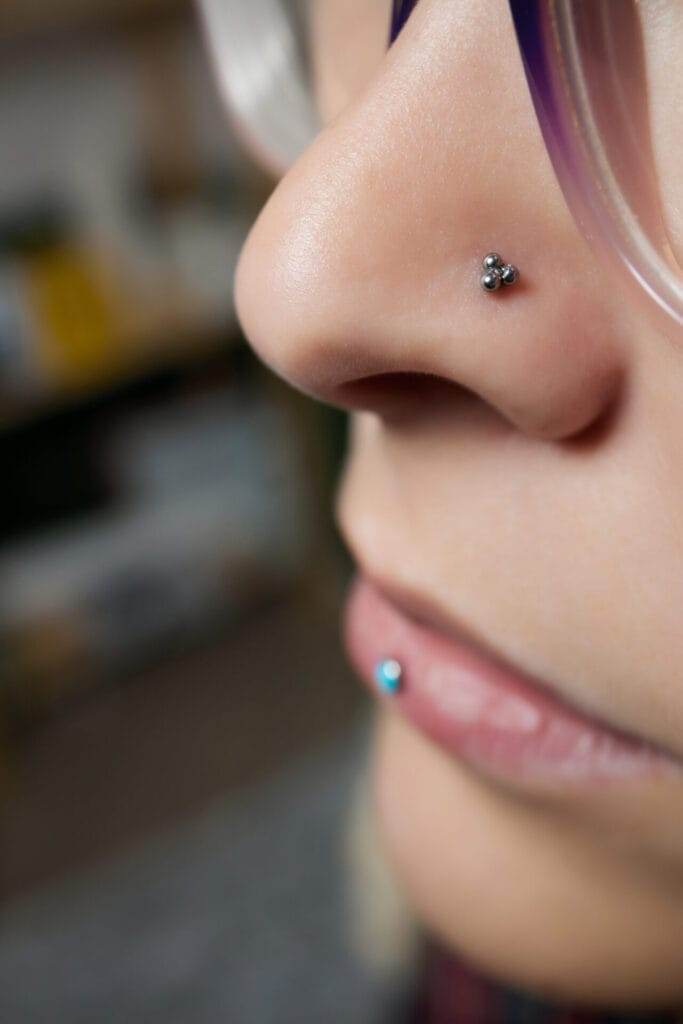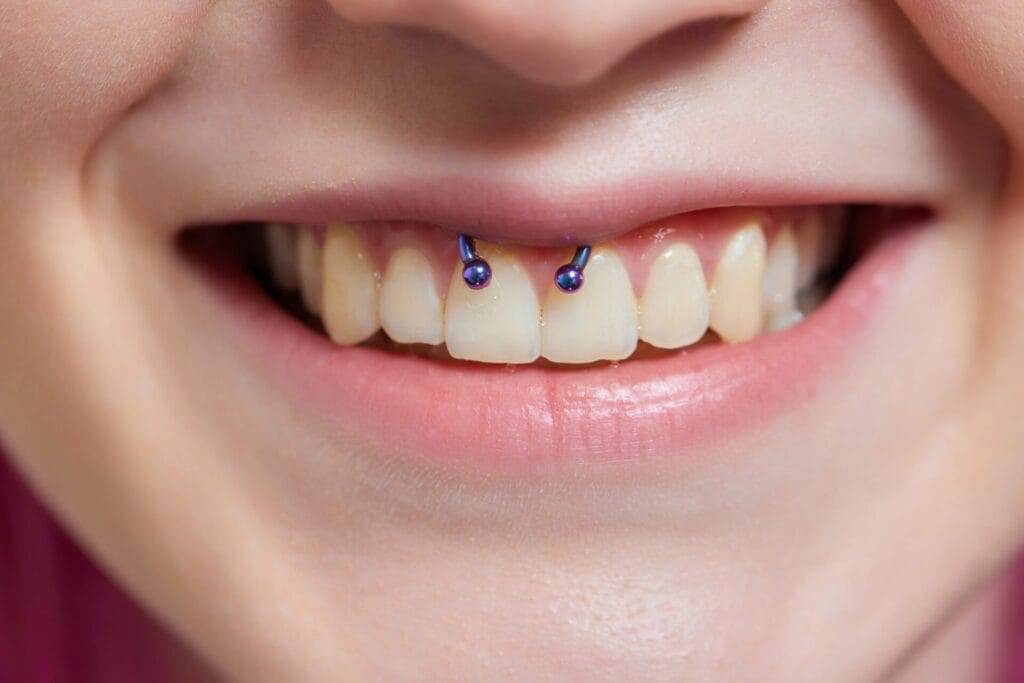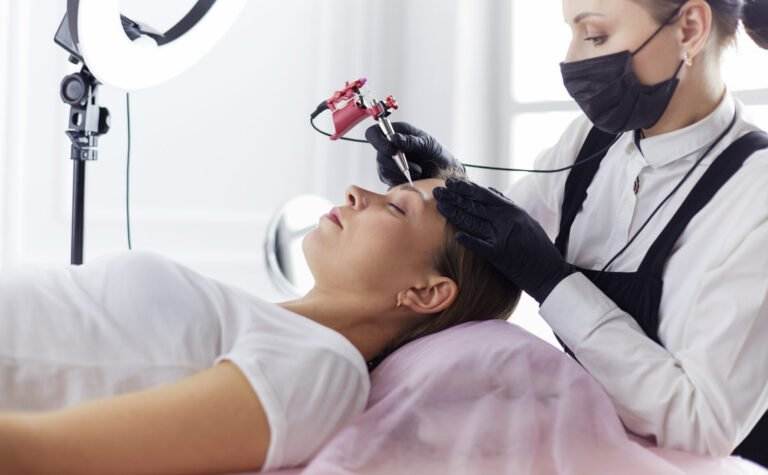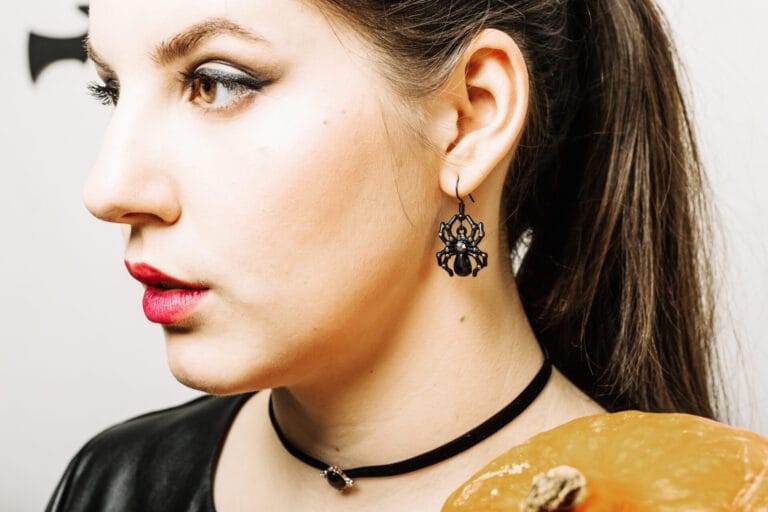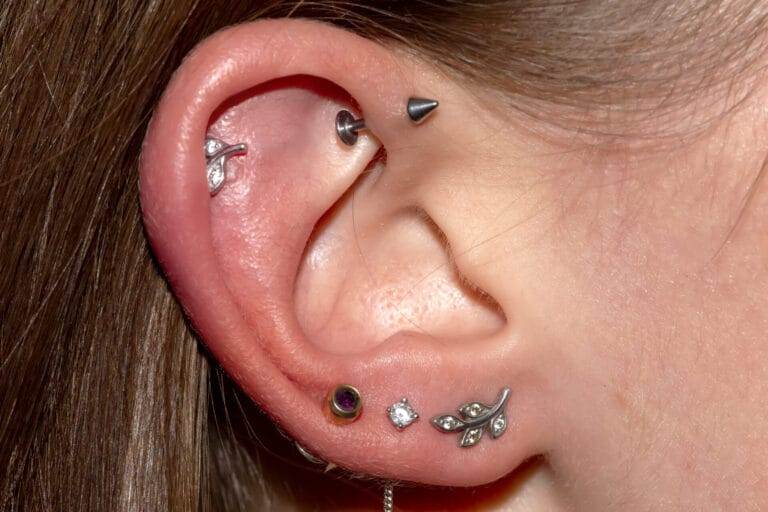Piercings have become increasingly popular in recent years, with people of all ages and backgrounds embracing this form of body art. Whether it’s a simple earlobe piercing or a more daring nipple or facial piercing, there are endless options to choose from. However, with so many different types of piercings available, it can be overwhelming to know where to start. That’s why we’ve created this comprehensive guide to help you navigate the world of piercings. In this blog post, we will cover everything from understanding the different types of piercings to choosing the right piercing studio, preparing for your piercing, pain management techniques, aftercare tips, dealing with common piercing problems, changing and upgrading your jewelry, healing times and expectations, dos and don’ts for maintaining your piercing’s health and appearance, exploring the latest piercing trends and styles, and long-term care and maintenance for your piercings.
Understanding the Different Types of Piercings: From Earlobes to Nipples and Beyond
When it comes to piercings, there is a wide variety of options to choose from. Let’s start with the most common type of piercing: the earlobe. This is the most basic and least painful type of piercing, making it a popular choice for first-timers. Moving up the ear, you have cartilage piercings such as helix piercings (located on the upper part of the ear) and tragus piercings (located on the small piece of cartilage in front of the ear canal). These piercings can be a bit more painful than earlobe piercings but are still relatively easy to heal.
Moving away from the ears, there are also facial piercings such as nose piercings (located on either side of the nostril), eyebrow piercings (located above or below the eyebrow), and lip piercings (located on the upper or lower lip). These piercings can be more painful and may take longer to heal due to the higher blood flow in these areas.
For those looking for more adventurous piercings, there are options such as nipple piercings (located on the nipple), navel piercings (located on the belly button), and genital piercings (located on various parts of the genital area). These piercings are generally more painful and require extra care during the healing process.
Preparing for Your Piercing: Tips for a Smooth and Successful Experience
Before getting a piercing, there are several steps you can take to ensure a smooth and successful experience:
1. Research and Consultation: Do thorough research on the type of piercing you want and consult with a professional piercer. They can provide valuable information about the process, aftercare, and any potential risks.
2. Choose the Right Jewelry: Discuss jewelry options with your piercer. They will recommend appropriate jewelry based on the type of piercing and your personal preferences.
3. Eat Well and Stay Hydrated: Make sure you eat a nutritious meal before your appointment to prevent lightheadedness or fainting during the piercing process. Also, drink plenty of water to stay hydrated.
4. Avoid Alcohol and Blood Thinners: Alcohol and blood thinners can increase bleeding during the piercing process. It’s best to avoid them for at least 24 hours before your appointment.
5. Dress Comfortably: Wear loose-fitting clothing that allows easy access to the piercing area. This will make it easier for the piercer to work and for you to care for the piercing afterward.
During the piercing process, you can expect some discomfort or pain, depending on the location of the piercing. However, a skilled piercer will make the process as quick and painless as possible. It’s important to stay calm and relaxed during the procedure. Deep breathing exercises or listening to calming music can help you relax. Remember to communicate with your piercer if you experience any excessive pain or discomfort.
Pain Management: How to Minimize Discomfort During and After Your Piercing
While some pain is inevitable during the piercing process, there are several techniques you can use to minimize discomfort:
1. Numbing Creams: Some piercing studios offer numbing creams that can be applied to the skin before the piercing. These creams help numb the area and reduce pain.
2. Ice Packs: Applying an ice pack to the piercing area before the procedure can help numb the skin and reduce pain.
3. Distraction Techniques: Engaging in deep breathing exercises, listening to music, or focusing on something else can help distract your mind from the pain.
After the piercing, you may experience some soreness, swelling, or redness in the area. To manage these symptoms:
1. Ice Packs: Applying ice packs to the piercing area can help reduce swelling and provide relief.
2. Over-the-Counter Pain Relievers: Non-steroidal anti-inflammatory drugs (NSAIDs) such as ibuprofen can help alleviate pain and reduce swelling.
3. Saltwater Soaks: Soaking the piercing in a saline solution (a mixture of salt and water) can help reduce inflammation and promote healing.
It’s important to follow your piercer’s aftercare instructions carefully to ensure proper healing and minimize discomfort.
Aftercare 101: Essential Steps for Keeping Your Piercing Clean and Healthy
Aftercare is crucial for maintaining the health and appearance of your piercing. Here are some essential steps to follow:
1. Cleanse with Saline Solution: Cleanse the piercing twice a day with a saline solution. You can either purchase a pre-made saline solution or make your own by dissolving 1/4 teaspoon of non-iodized sea salt in 8 ounces of distilled water.
2. Avoid Touching with Dirty Hands: Always wash your hands thoroughly before touching your piercing. Avoid unnecessary touching or twisting of the jewelry, as it can introduce bacteria and delay the healing process.
3. Avoid Harsh Products: Avoid using harsh soaps, alcohol-based products, or hydrogen peroxide on your piercing, as they can irritate the skin and delay healing.
4. Be Gentle: When cleaning your piercing, be gentle and avoid using excessive force. Pat the area dry with a clean paper towel or let it air dry.
5. Avoid Swimming and Hot Tubs: Avoid swimming in pools, hot tubs, or natural bodies of water until your piercing is fully healed. These environments can introduce bacteria and increase the risk of infection.
6. Avoid Sleeping on the Piercing: If possible, avoid sleeping on the side of the piercing to prevent irritation and pressure on the area.
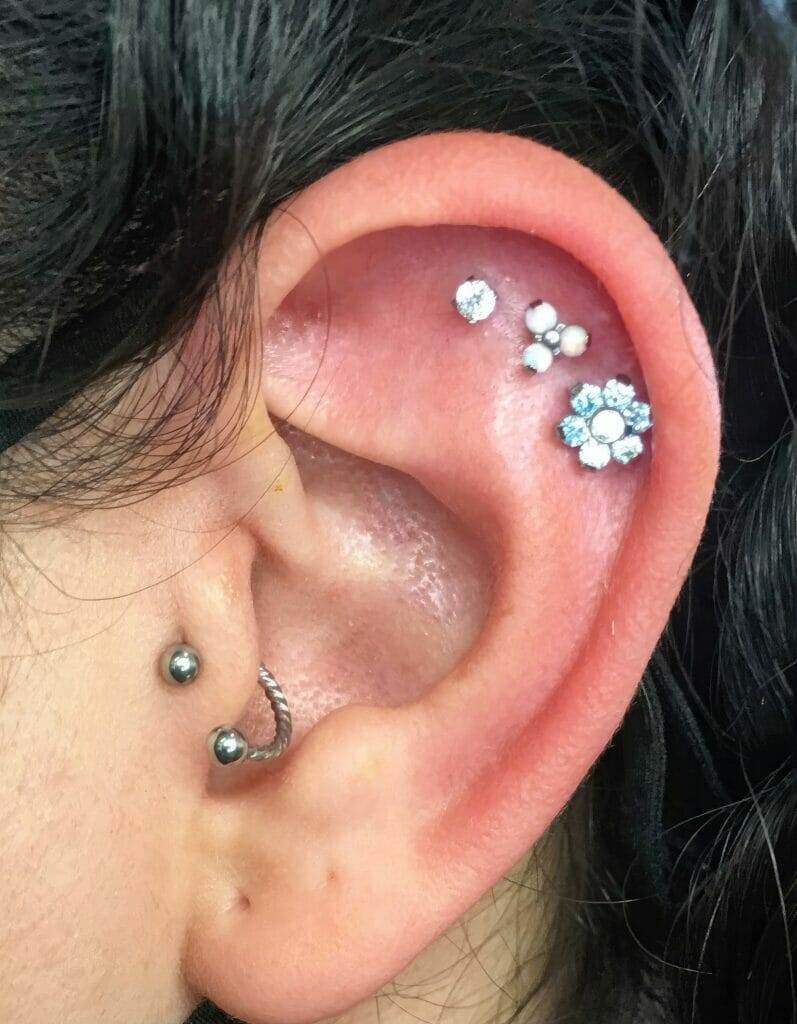
Dealing with Common Piercing Problems: Infections, Swelling, and More
Despite proper aftercare, complications can still occur with piercings. Here are some common problems that can arise and how to deal with them:
1. Infections: Signs of an infection include increased pain, redness, swelling, discharge, and fever. If you suspect an infection, contact your piercer or a healthcare professional immediately. They may prescribe antibiotics to treat the infection.
2. Swelling: Swelling is a normal part of the healing process. To reduce swelling, apply ice packs to the area and take over-the-counter anti-inflammatory medication as directed by your piercer or healthcare professional.
3. Keloids: Keloids are raised scars that can form around a piercing. If you are prone to keloid formation, discuss this with your piercer before getting a piercing. Treatment options for keloids include corticosteroid injections, silicone gel sheets, and surgical removal.
4. Migration and Rejection: Sometimes, the body may reject a piercing, causing it to migrate or be pushed out. If you notice the jewelry moving or the piercing becoming shallower, consult your piercer for advice.
It’s important to address any problems or complications promptly to prevent further complications and ensure proper healing.
Changing and Upgrading Your Jewelry: When and How to Do It Safely
Once your piercing has fully healed, you may want to change or upgrade your jewelry. Here are some tips for doing it safely:
1. Wait for Full Healing: It’s crucial to wait until your piercing is fully healed before changing the jewelry. This can take anywhere from a few weeks to several months, depending on the type of piercing.
2. Choose High-Quality Jewelry: Opt for high-quality jewelry made from materials such as surgical steel, titanium, or gold. Avoid cheap or low-quality jewelry that can cause irritation or allergic reactions.
3. Cleanse the New Jewelry: Before inserting new jewelry, make sure to clean it thoroughly with a saline solution or an antiseptic solution recommended by your piercer.
4. Be Gentle: When changing the jewelry, be gentle and avoid twisting or forcing it through the piercing. If you encounter resistance, consult your piercer for assistance.
5. Gradual Upgrades: If you want to upgrade to larger or more elaborate jewelry, do it gradually to allow your piercing to adjust and heal properly.
Healing Times and Expectations: What to Anticipate During the Piercing Process
Healing times for piercings vary depending on the type of piercing and individual factors such as age, overall health, and aftercare practices. Here are some general guidelines:
1. Earlobe Piercing: Earlobe piercings typically take 6-8 weeks to heal fully.
2. Cartilage Piercing: Cartilage piercings can take anywhere from 3 months to 1 year to heal completely.
3. Facial Piercing: Facial piercings, such as nose or lip piercings, usually take 2-4 months to heal fully.
4. Nipple Piercing: Nipple piercings can take 6-9 months to heal completely.
5. Genital Piercing: Genital piercings have varying healing times depending on the location and type of piercing. It can take anywhere from 4 weeks to 6 months or longer for complete healing.
During the healing process, it’s normal to experience some redness, swelling, and discharge. However, if you notice excessive pain, prolonged bleeding, or signs of infection, consult your piercer or a healthcare professional.
Piercing Dos and Don’ts: Tips for Maintaining Your Piercing’s Health and Appearance
To maintain your piercing’s health and appearance, here are some dos and don’ts to keep in mind:
Dos:
– Follow your piercer’s aftercare instructions carefully.
– Cleanse the piercing with a saline solution twice a day.
– Keep the piercing dry and avoid excessive moisture.
– Wear clean clothing and avoid tight-fitting or irritating fabrics.
– Maintain good hygiene by washing your hands before touching the piercing.
Don’ts:
– Don’t touch or twist the jewelry unnecessarily.
– Avoid using harsh soaps, alcohol-based products, or hydrogen peroxide on the piercing.
– Don’t remove the jewelry before the piercing is fully healed.
– Avoid swimming in pools, hot tubs, or natural bodies of water until the piercing is fully healed.
– Don’t sleep on the side of the piercing if possible.
Following these dos and don’ts will help ensure a healthy and successful healing process for your piercing.
Piercing Trends and Styles: Exploring the Latest Fashions in Body Art
Piercing trends and styles are constantly evolving, offering endless possibilities for self-expression. Here are some current piercing trends to explore:
1. Multiple Ear Piercings: Stacking multiple earlobe and cartilage piercings is a popular trend, allowing for unique combinations and arrangements.
2. Daith Piercings: Daith piercings, located in the innermost fold of the ear, have gained popularity for their aesthetic appeal and potential migraine relief benefits.
3. Constellation Piercings: Constellation piercings involve multiple piercings strategically placed to resemble a constellation of stars.
4. Septum Piercings: Septum piercings, located in the middle of the nose, have become a popular choice for those seeking a bold and edgy look.
5. Dermal Piercings: Dermal piercings involve inserting an anchor under the skin, allowing for unique placements and designs.
Remember to consult with a professional piercer to discuss the latest trends and find the style that suits you best.

Piercing Maintenance: Long-Term Care and Maintenance for Your Piercings
To keep your piercing healthy and looking great for years to come, here are some long-term care and maintenance tips:
1. Cleanse Regularly: Even after your piercing has fully healed, continue to cleanse it regularly with a saline solution to prevent buildup of bacteria or debris.
2. Avoid Harsh Chemicals: Avoid exposing your piercing to harsh chemicals such as hair products, perfumes , and cleaning agents. These chemicals can irritate the piercing and delay the healing process. It is important to keep the area clean, but opt for gentle, non-irritating solutions such as saline solution or a mild soap recommended by your piercer. Additionally, avoid swimming in pools or hot tubs that are treated with chlorine, as this can also irritate the piercing.

